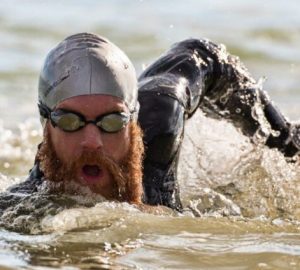Don’t let Blue Monday get you down
Earlier this week a number of papers were talking about ‘Blue Monday’, describing it as the most depressing day of the year. Never mind that the science behind the concept of Blue Monday is tenuous (and that’s being generous) and the idea was originally linked to a publicity campaign by Sky Travel, it has a compelling ring to it and makes a good story for news-starved editors and bloggers. We thought we’d join in.
There’s no doubt that for those of us in the UK, January is a long, cold, dark month and that contributes to making our sofas and beds more appealing than the water, either in the pool or outside. It’s already long enough past New Year for those exciting resolutions to become laborious chores. The number of swimmers at the pool is dropping (see last week’s post for more on this) and the main open water swimming season still seems a long time away. If you’re new to swimming in 2014 you’ve probably discovered by now that it’s harder than it looks. If you’re a returning swimmer, it most likely seems harder than you remembered. Summoning up the will-power to drag yourself out for a swim is becoming ever more difficult so why not simply wait until spring to start training?
Several reasons:
- Swimming becomes easier and more enjoyable as you improve your feel for the water and learn to relax – but you can only achieve this by being regularly in the water. I’ve heard one coach say ideally you need to swim at least three times each week to develop and maintain a feel for the water. I don’t know whether that’s true or not (and it probably varies) but frequent, short swims certainly seem more effective than occasional long ones.
- Neither improving your swimming technique nor your endurance can be done quickly. Front crawl involves complex movements and good coordination. You need time to master it. Endurance training causes physiological changes in the body and these adaptations again need time. Swimming regularly now will make it easier to achieve your goals later in the year.
- It’s much easier to swim once it becomes a habit. If you have set times each week for swimming that you commit to, it’s much easier to maintain them. Friends and family will learn that, for example, Tuesday evenings and Sunday mornings are your swimming times and this will help you stick to the programme. If you wait until later in the year before starting, you may find those slots have been taken by some other activity.
If you’re still struggling to overcome the attractions of your sofa, why not try one or more of the following for that extra motivation:
- Take part in Diabetes Swim 22 – try to swim the length of the English Channel in your local pool over a number of sessions
- Enter Swimathon – challenge yourself to a 5km pool swim and raise money for a good cause
- Schedule some swimming times with friends – you’re more likely to turn up and it will make the swimming easier
- Enter an early season event – why not book a weekend away in Spain in April and take part in a swim while you’re there – see our Feb/Mar 2014 issue for a suggestion.






